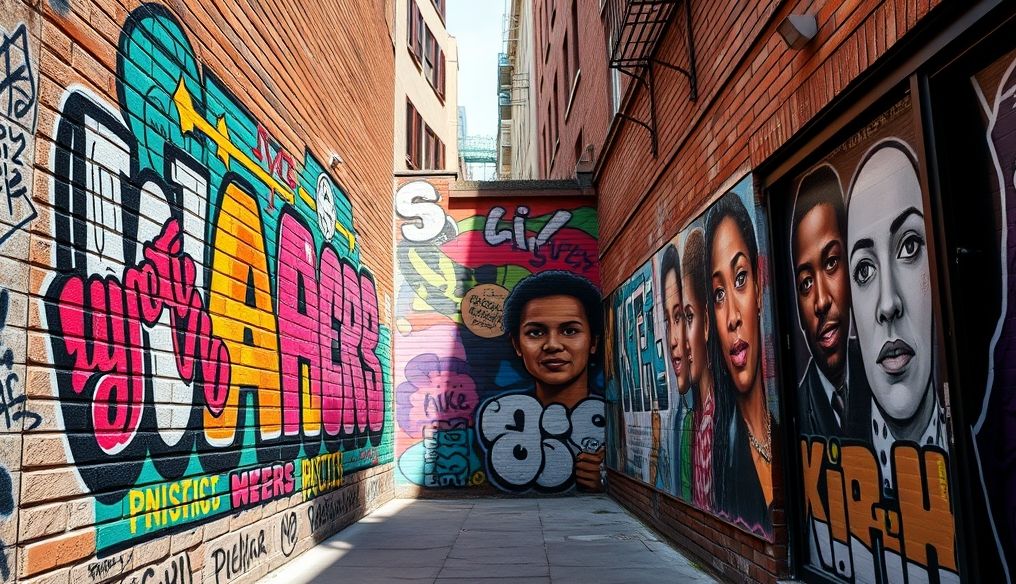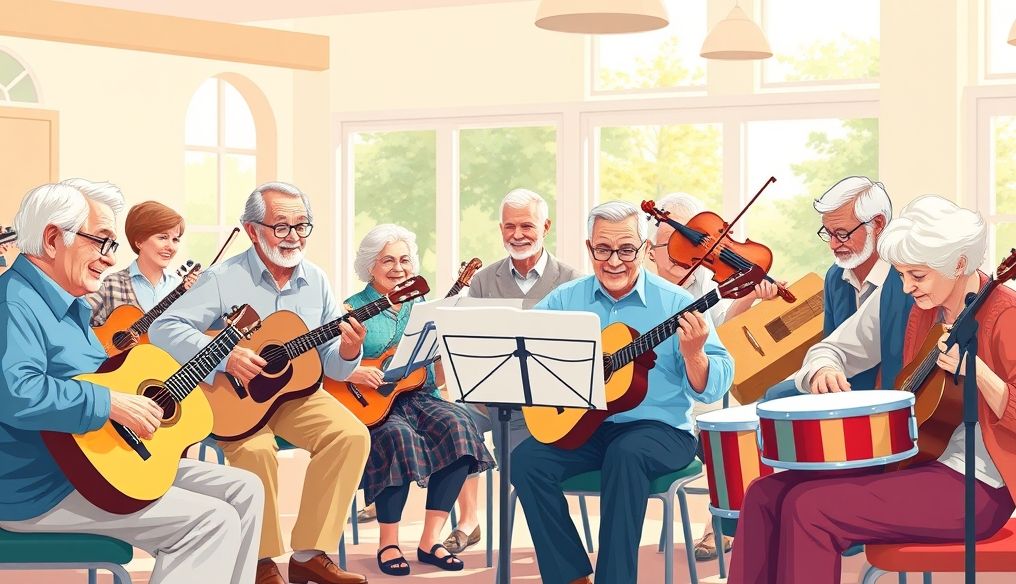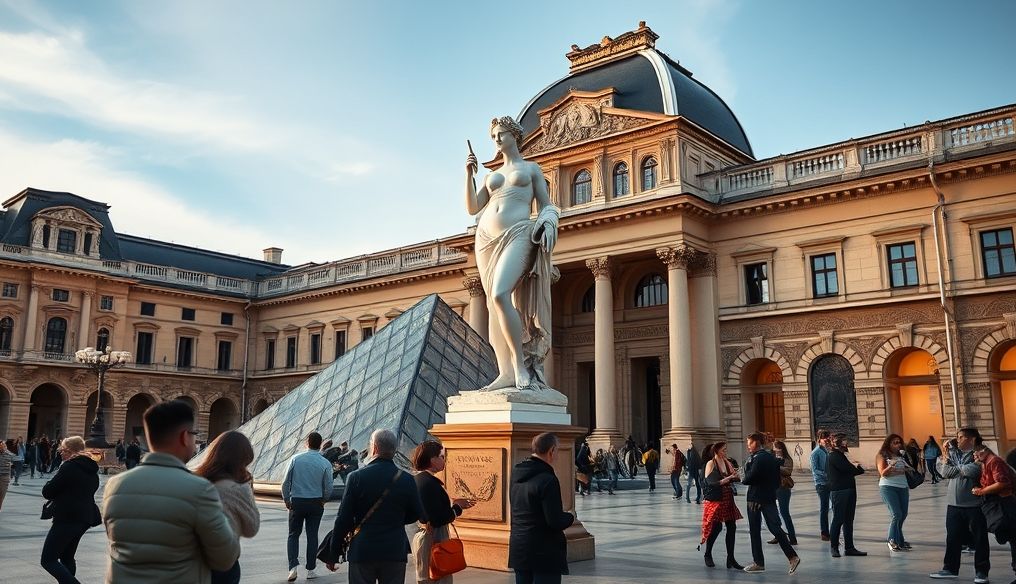Is Street Art (Graffiti) Vandalism or a Worthy Form of Creative Expression?
Street art, or graffiti, is a form of artistic expression that appears in public spaces. It is often controversial, with some viewing it as vandalism of public property, while others see it as a form of art and creativity. This article will explore the different aspects of this contentious art form and discuss whether it deserves celebration.
What is Street Art (Graffiti)?
Street art is a broad term that encompasses a variety of artistic expressions that appear in public spaces. This can include:
- Graffiti: Writing or drawing on walls or other surfaces using paint or spray paint.
- Posters: Printed images or drawings that are pasted onto walls or other surfaces.
- Sculptures: Three-dimensional artworks that are created in public spaces.
- Art Installations: Temporary artworks created in public spaces using a variety of materials.
Why Do Artists Practice Street Art?
There are many reasons why artists practice street art, including:
- Self-Expression: Street art provides artists with a way to express their thoughts, feelings, and opinions.
- Communicating a Message: Street art can be used to convey political, social, or environmental messages.
- Decorating Public Spaces: Street art can add color and life to public spaces, making them more attractive.
- Connecting with the Public: Street art provides artists with a way to connect with the public directly, without having to go through traditional art institutions.
Arguments in Favor of Street Art
There are many arguments that support the idea that street art is a form of art and creativity, including:
- Creativity: Street art requires a great deal of creativity and skill. Artists often use innovative techniques and styles to create their artwork.
- Expression: Street art provides artists with a way to express their thoughts and feelings in a free and direct way.
- Social Impact: Street art can have a significant social impact, as it can raise awareness of important issues or inspire people to think differently.
- Activating Public Spaces: Street art can add color and life to public spaces, making them more attractive.
Arguments Against Street Art
There are also many arguments that oppose the idea that street art is a form of art and creativity, including:
- Vandalism: Street art is often considered vandalism of public property, as it is created without the permission of building owners or local authorities.
- Defacement: Street art can deface public spaces, making them look ugly and unattractive.
- Nuisance: Street art can be a nuisance to people, especially if it contains offensive or inappropriate messages.
- Cost: Removing street art can be very expensive for building owners and local authorities.
Examples of Influential Street Art
There are many examples of street art that have had a significant impact on society, including:
- Banksy's Works: Banksy is a British graffiti artist famous for his satirical and political works. His works often spark controversy, but they are also highly regarded for their intelligence and creativity.
- The Berlin Wall: The Berlin Wall was a symbol of the division between East and West during the Cold War. After the fall of the wall, it was covered in graffiti by artists from all over the world, making it a symbol of freedom and expression.
- Diego Rivera's Murals: Diego Rivera was a Mexican painter famous for his large murals depicting the history and culture of Mexico. His murals often carried strong political and social messages.
Conclusion
There is no easy answer to the question of whether street art is vandalism or creativity. It depends on the person's point of view and the context in which the street art appears. However, it is clear that street art can have a significant impact on society, whether it is through self-expression, conveying a message, or decorating public spaces. We should be open to street art and try to understand the message that the artist is trying to convey, rather than rejecting it outright.
Different Perspectives on Street Art
To better understand the debate surrounding street art, it's important to consider the different perspectives held by individuals and communities on this subject.
The Artist's Perspective
For the artist, street art is a means of self-expression, sharing thoughts and opinions with the public. They may see public spaces as a huge canvas waiting to be decorated. For them, it's a way to communicate directly with people, challenge the status quo, and spark discussion about important issues.
The Property Owner's Perspective
On the other hand, the property owner may see street art as vandalism of property, and a defacement of the aesthetic appearance of the building. They may feel frustrated and angry about the cost and effort required to remove the graffiti. They may also see street art as encouraging further vandalism and crime.
The Community's Perspective
Community perspectives on street art vary widely. Some may see it as adding vibrancy and creativity to the city, while others see it as a source of annoyance and defacement. This may depend on the quality of the art, its location, and the message it carries.
The Role of Law and Policy
Laws and policies play an important role in determining whether street art is allowed or not. In some cities, street art is permitted in certain areas, or artists are encouraged to create artwork in public spaces. In other cities, street art is considered illegal, and artists who practice it are punished.
It's important to strike a balance between protecting property rights and freedom of artistic expression. Dialogue and mutual understanding between artists, property owners, and local authorities can help find solutions that are acceptable to everyone.
The Future of Street Art
Street art is likely to continue to evolve and grow in the future. With the advent of new technologies, such as augmented reality and virtual reality, we may see new and innovative forms of street art. Street art may also become more interactive, with the public being able to participate in the creation of artwork.
Regardless of its form or location, street art will always remain a powerful means of self-expression, communicating with the public, and sparking discussion about important issues.
Practical Tip: If you are an artist interested in street art, try to contact property owners and local authorities to obtain permission before creating artwork in public spaces. You can also participate in organized community art projects, which provide you with the opportunity to express yourself in a legal and responsible manner.
Interesting Statistic: According to a study conducted in 2019, 63% of city dwellers believe that street art adds value to the community, while 27% believe it is vandalism.
Important Term: "Urban Art Fairs" are events held in public spaces to showcase street art, providing artists with a platform to exhibit their work, and the public with an opportunity to appreciate this art form.




